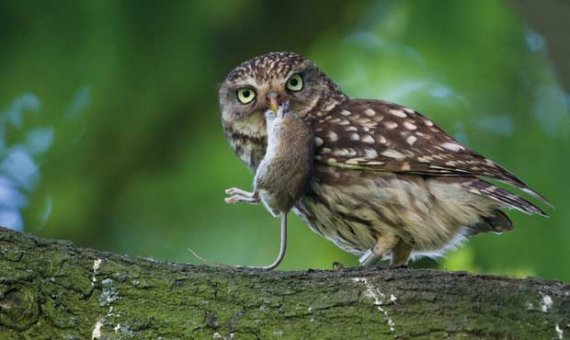‘For certain kinds of pollution, birds of prey and owls are extremely good indicators,’ explains Van den Brink. ‘Birds of prey are at the top of the food chain. Pollution that accumulates in the food chain is found in the largest quantities in birds of prey.’ It is found in their feathers or eggs, as well as in various organs and tissues. Not that this is a new finding. Hawks, falcons, vultures and owls have already been in use as eco-monitors for more than 50 years. Van den Brink and his colleagues now made the first overview of European studies and research in this field over the years, as well as of ongoing research.
This produced a varied harvest of 52 different studies in 15 (mainly west-European) countries. Only one of the studies took place in the Netherlands. This was a study done by Van den Brink for Alterra in 2000. ‘A study of pollution of water meadows with PCBs and heavy metals. We used little owls for it. They feed on worms, which are good indicators for this kind of pollution. The pollution in the water meadows turned out to be significantly greater than elsewhere in the country.’ Due to lack of funding the research did not go beyond that one study. But there are plans for new research now, says Van den Brink. This time into the presence of rodenticides, chemical products for getting rid of rats.
Blank spots
A Europe-wide monitoring network is certainly one of the possibilities, says Van den Brink. But it would require better coordination of existing research. Widely different methods are in use. Some researchers use feathers and eggs to demonstrate the presence of pollution, while others take samples from dead or living birds. It would also be necessary to include the blank spots, such as the Netherlands and eastern Europe.
There is no one model bird for monitoring pollution with, according to Van den Brink. ‘It depends which substance you want to monitor. If you are monitoring rodenticide, for instance, you need a species that feeds on small mammals or carrion. Near buildings, that could be the barn owl or the common kestrel. In other areas it could be the red kite. But that is rare in the Netherlands: there are only a few breeding pairs. So that is not much use to you if you want a broad overview. And besides, birds don’t eat the same things everywhere. Barn owls eat worms here, but in southern Europe they eat more beetles and insects.’

